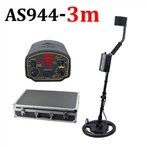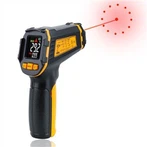Uncertainty and calibration method of wind direction anemometer
Wind direction and wind speed are an important part of natural climate. Its existence is not only a response to the characteristics of atmospheric circulation, but also one of the parameter indicators and energy sources for climate comparison in different places. For the observation of wind speed and direction, it is inevitable that there will be differences in the observed values between the use of wind direction anemometers and artificially used equipment, observation methods and measurement principles. The magnitude of this discrepancy and the reasons for the discrepancy are then worth exploring.
With the change of the times, the wind direction and anemometer has developed rapidly. New instruments are used in all walks of life in China, especially the use of wind direction and anemometer to predict national meteorology and ocean is an important task. For traceability and quality assurance, instrument calibration of the instrument must be carried out, especially under dynamic conditions, with calibration measurements in wind tunnels.
Uncertainty of wind direction and anemometer The relative uncertainty of the wind speed of the whole device relative to the standard, should include the uncertainty of the measurement results of the standard device composed of the second-class standard Pitot static pressure tube and the micromanometer, and the instability of the airflow in the wind tunnel. Uncertainty due to nonuniformity and inhomogeneity and uncertainty of the device.
Wind direction anemometer calibration method
(1) The following calibration can only be performed on the anemometer that has passed the visual inspection.
(2) The installation position and requirements of the pitot tube and the wind direction anemometer in the wind tunnel calibrator: the total pressure hole of the pitot tube should be aligned with the direction of the airflow, the axis of the pitot tube probe should be (25±5) mm away from the wall of the working section, and the pitot tube should be The support rod should be installed vertically and firmly on the wall of the working section of the wind tunnel.
The protective layer of the wind direction anemometer should be strong and uniform during the application process, and there should be no delamination, and obvious defects such as rust appear. Error increases. The application of wind direction anemometer in agricultural production plays an important role in the prevention and protection of crops in advance.






